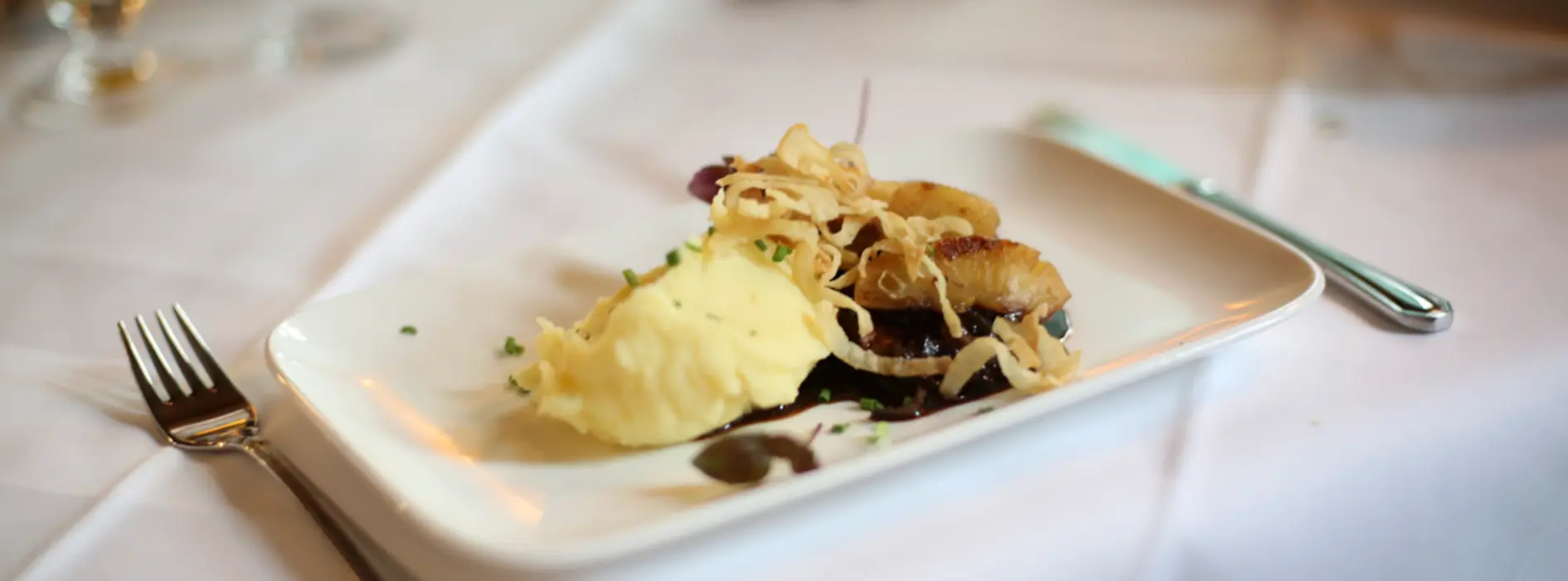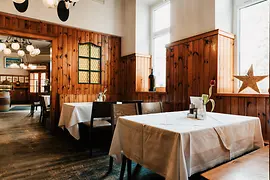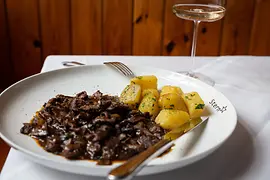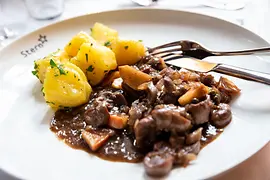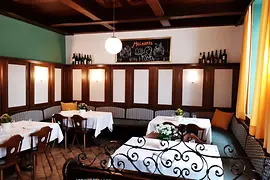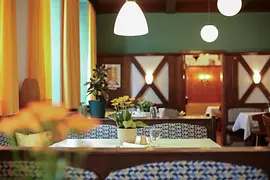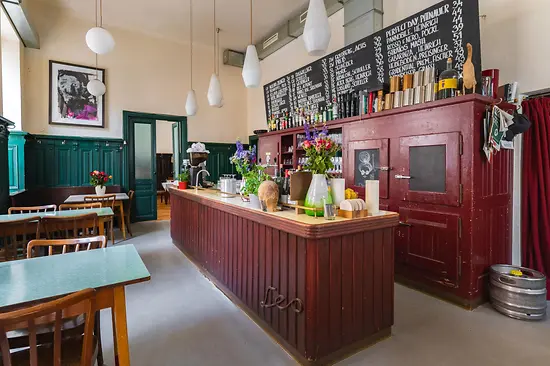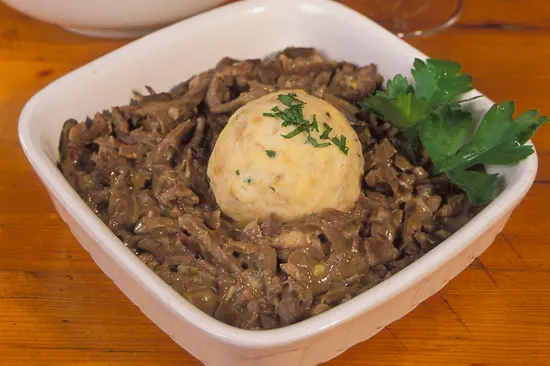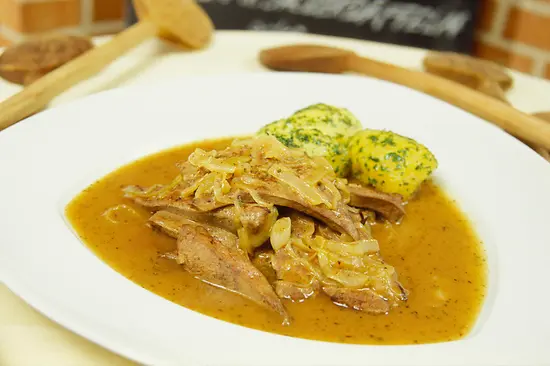Offal Stages a Comeback
Offal played a key role in everyday Viennese cuisine in the 18th and 19th centuries. Old cookbooks have pages and pages dedicated to recipes that use heart, brain, liver and spleen. Viennese offal cuisine really is something special, thanks to its unique composition and flavoring. Back in the day, veal offal was particularly highly prized. Veal heart in cream sauce and breaded calf’s head were popular recipes. Strictly speaking, the last one does not qualify as offal, but it tends to get included in the conversation all the same.
Serving Tradition
For many years, offal lost its rightful place on the menu at the capital’s Beisl (pubs) and restaurants. But ambitious cooks with an interest in Viennese culinary history are now responsible for its renaissance at the city’s dining tables. In fact, offal never completely disappeared as it was always held up as the pinnacle of Viennese cuisine and remained a firm favorite among the city’s well-schooled foodies. It actually takes considerable skill to turn offal into delicacies. Heinz Reitbauer, the man behind Michelin-starred restaurant Steiereck im Stadtpark and one of the nation’s top chefs, is a self-avowed offal fan: “Offal is synonymous with Viennese cuisine and assures its unmistakable identity,” he says. For Reitbauer, looking back through history is an important part of being a chef. And the annals of Viennese cuisine provide him with plenty of inspiration when it comes to developing new dishes.
Nose to Tail
Offal dishes have taken on a fresh significance in the war on waste. Many chefs are committed to not throwing food out, which means that they are at pains to use every last part of a slaughtered animal, in step with the international trend known as “nose to tail eating” attributed to the English chef Fergus Henderson. And this means that every scrap of a healthy animal can be deployed in some way to create delicious dishes. The sharp contrast to mass farming practices could hardly be clearer.
It Doesn’t Get Much More Viennese Than This
Today, Viennese offal cuisine takes a variety of different forms. Contemporary restaurants offer innovative takes on the classics, the traditional Beisl provide down-to-earth fare, and award-winning restaurants serve refined, high-class cuisine. Kalbsbeuschel (chopped veal heart and lungs cooked in a sauce), Bruckfleisch (a stew made with cuts of beef offal), tripe, sweetbread, breaded kidneys and pan-fried liver are no longer an oddity on menus. An excellent example of this trend is Gasthaus Wolf, a Beisl with a characteristic old wooden bar that offers renowned offal specialties cooked by Jürgen Wolf. Although Wolf himself no longer cooks there, his recipes and offal dishes – as seen in Wolf. Ein Kochbuch – very much set the tone for others to follow. The homely Pichlmaiers zum Herkner restaurant also offers classic Viennese cuisine, including offal dishes, at a more refined level. Alongside classical dishes such as Viennese beuschel, modern interpretations of offal are also offered here, for instance as a terrine of sweetbreads
Offaly Versatile
Gasthaus Buchecker & Sohn is another hot tip for anyone looking to sample old-school Viennese cuisine and offal dishes. Tripe soup, beef bone marrow broth, veal heart in creamy sauce and plenty of other options including sweetbread, brain and kidneys vie for pride of place on the menu. Similar to the range of offal dishes at the bistro-style Haas Beisl (e.g. sweetbreads, “Beuschel” (veal lung ragout), kidneys and “Bruckfleisch”, a braised offal goulash). The tavern-like ambience at Haas Beisl wins over a lot of diners. Hearty offal dishes are on the menu at the restaurant Zur Goldenen Kugel, including oxtail, tongue or heart of veal and many other delicacies.
Another Viennese classic, Gasthaus Stern, offers a changing roll call of dishes featuring innards, including brain with egg and breaded veal sweetbread. It’s also well worth the trip to the 11th district to enjoy the beautifully preserved interior decor. Meixners is likewise located in one of the outer districts and serves outstanding offal dishes. Meixners is a Viennese institution whose heritage is being upheld by a new pair of restaurateurs. They adopted legendary recipes such as the offal dishes and delicately modernized them.
- Am Heumarkt 2a, 1030 Wien
- wien@steirereck.at
- http://www.steirereck.at
Opening times
- Mo - Fr, 11:30 - 16:00
- Mo - Fr, 18:30 - 00:00
Accessibility
no steps (Double swinging doors 220 cm wide)
Seeing eye dogs allowed
Wheelchair accessible restroom available.
- Große Neugasse 20/Rienößlgasse 17, 1040 Wien
- tisch@gasthauswolf.at
- http://www.gasthauswolf.at/
Opening times
- Mo - Fr, 18:00 - 23:00
- Dornbacher Straße 123, 1170 Wien
- pichlmaiers@zumherkner.at
- https://www.zumherkner.at
Opening times
- Mo, 18:00 - 00:00
- Th, 18:00 - 00:00
- Fr - Su, 12:00 - 00:00
- Gußhausstraße 23, 1040 Wien
- http://www.gasthaus-bucheckerundsohn.at
Opening times
- Mo - Fr, 15:00 - 00:00
- Margaretenstraße 74, 1050 Wien
- https://www.haasbeisl.at
Opening times
- Mo - Sa, 11:00 - 23:00
- on holidays - Su, 11:30 - 21:00
- Lazarettgasse 6, 1090 Wien
- https://zurgoldenenkugel.at
Opening times
- Mo - Fr, 11:00 - 23:00
- Braunhubergasse 6, 1110 Wien
- http://www.gasthausstern.at
Opening times
- We - Fr, 17:30 - 23:00
- Sa, 11:00 - 23:00
- Su, 11:00 - 16:00
- Buchengasse 64, 1100 Wien
- http://www.meixners-gastwirtschaft.at/
Opening times
- Mo - Sa, 11:30 - 22:00
